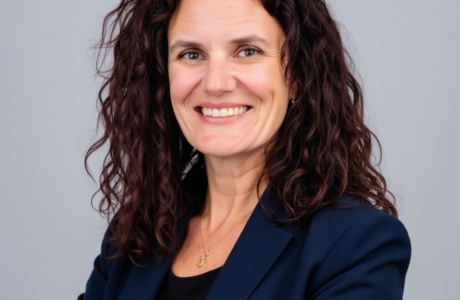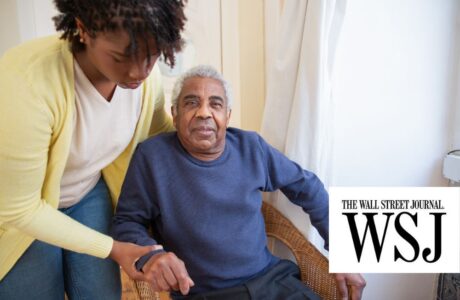
Filling the Gaps: From Hospice Care to End of Life Doula
By Mary Keenan, Palliative and End of Life Doula, Nurse
In this post, Empowered Endings team member Mary Keenan discusses some of the shifts she’s witnessed over the years working in Hospice Care and shares her journey from RN to End of Life Doula.
My journey toward end-of-life care was deeply intertwined with my personal and spiritual journey. Faith has always been a cornerstone of my life, and reading Betty Eadie’s book “Embraced by the Light“ sparked my interest and deepened my belief that there may be more to this life than we know.
My career began as a Licensed Vocational Nurse (LVN). I spent 15 years in acute care hospital settings before advancing to become a Registered Nurse (RN). I continued working in acute care as an RN, spending years supporting patients in Oncology, where I grew to appreciate caring for people facing serious illnesses, and the strength they demonstrated was nothing short of inspiring.
In 1998, I transitioned to a role as a hospice nurse and loved it. I was like a sponge absorbing everything I could about pain and symptom management, End of Life Care, and the End of Life experience from my colleagues and my patients. Eventually, I became a certified hospice and palliative nurse (CHPN).
We were a tight group of hospice care professionals with a common goal–guiding, supporting, and educating patients and families through the final stage of life.

My caseload as an RN Case Manager was very manageable at the time. I could generally see my patients once or twice a week, more if needed. The MSWs and the Chaplains saw or spoke with their patients or family members 2-3 times a month, more if needed.
As hospice care professionals, we built relationships, cultivated connections, and got to know patients and families. This allowed them to build trust in their care team.
Over time, the landscape of hospice care evolved. While the Medicare conditions of participation (COPs) for hospice have not changed, the frequency of visits is often less than it once was. An RN is required to see the patient at least once every 14 days, while the MSW and Chaplain need to make initial contact and assessment. However, services can be denied if the patient/family does not want them, and larger caseloads may lead to fewer visits.
Hospice provides a wonderful and much-needed service to patients and families. Unfortunately, for some hospice agencies, patient care has shifted away from relationships and deep connections towards efficiency and prioritizing the bottom line.
There are only two nonprofit hospice agencies in San Diego County. Having worked for both profit and nonprofit organizations (and still working per diem for a nonprofit), I feel there is a difference! That is not to say that the for-profit agencies are providing unsatisfactory care, but the broader industry trend emphasizes productivity and building census over proper staff training and quality of care.
This means the quality of care often comes down to who you are receiving support and care from. Patients and families need to do their homework and ask questions when looking for a hospice agency, and what matters most is who walks through your front door to provide the care and support.
- Is that person qualified, and have they been properly trained and oriented to take care of your loved one?
- Are they supported by their leadership team to be the best they can be? Are they listened to?
- Do they feel comfortable speaking up if they need help? Or are they held to unreasonable productivity standards?
- Are they working off the clock because they don’t want to get reprimanded for not completing their work promptly?
- Are they being assigned more patients than they can manage?
The toll of these shifts is evident across the industry. Burnout is real, and the challenges of the COVID-19 pandemic have exacerbated high turnover rates among healthcare professionals.
In 2022, the turnover rate for hospice nurses was over 29%. A nationwide BerryDunn survey of home health and hospice providers in 2021-2022 found that those with turnover rates ranging from 21% to 30% saw margins drop by about 1%. It also found that agencies with turnover rates above 15% have an average of 11-20% of their registered nurse positions unfilled.
These challenges affect the hospice agencies, the staff, the patients, and the families.
There is a need for intuitive and compassionate leaders who uplift and listen to those in the trenches rather than focusing solely on the bottom line. This will benefit patients, families, and hospice agencies.
At 65, after a long career in hospice, I decided I wanted to do things differently. I became an End of Life Doula. While not functioning as an RN, giving medications, or doing wound care, I share my knowledge and years of experience with those I serve. I know what a dignified, comfortable, Empowered End of Life Experience™ looks like. I have walked down this road with many patients and families.
As an End of Life Doula, I can spend as much time as needed providing support, education, and comfort for the patient and the family.
Gone are the days when families grew up and stayed in the same town, providing care to aging and ill family members. Instead, family members are spread all over the world.
Hospice is a much-needed service to provide care for those with complex and terminal illnesses–but hospice alone is often not enough.
An End Of Life Doula can fill in the gaps, providing companionship, care, comfort, guidance, and so much more. My mission and goal as an End of Life Doula is to take the fear and stigma out of the dying process and that the patients I serve leave this world peacefully on their terms.





